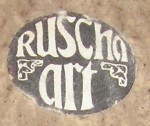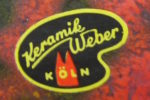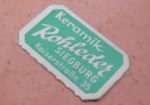White clay was almost always used (some rare examples of red/brown clay exist and are likely to be from periods when the normal source of clay ran out). Embossed and incised base numbering is used. Items are never moulded with Germany or West Germany.
If a form was made in more than one size the form number was followed by a number (1,2,3 etc). The higher the number in the sequence the larger the vase. The photo of vases shows form 321 in sizes 4, 3, 2 and 1 (from left to right).
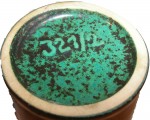
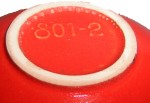
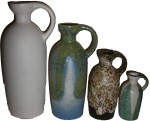
If a form was made in only one size the items are marked with the form number only.
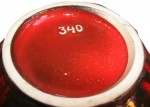
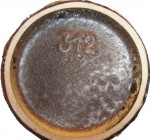
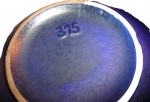
Some form numbers (below 100) were preceded by a letter (e.g. B, G, R etc).
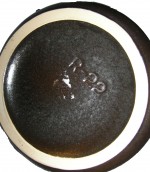
In some rare cases the bases were hand inscribed with the name Ruscha and the decor name or painted on (these tended to be earlier 1950s items).
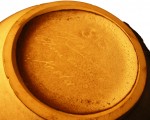
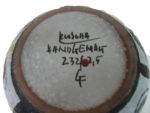
Stickers
Many Ruscha items are found without stickers. Where they are found with stickers they are always labelled as “Ruscha Art”. Sometimes an item is also found with a lable which was added by a retailer.
- Ruscha, Craquelee Decor) sticker
- Ruscha Art Sticker
- Shop Sticker – Keramik Weber, Köln, Germany
- Shop Sticker – Rohleder, Siegburg, Germany
- Shop Sticker – Robert Broch, Bottrop, Germany
Plates
Many plates were unmarked, those that were have numbers in the 700 range. In some rare cases the bases were hand inscribed with the name Ruscha and the decor name (these tended to be earlier 1950s items). Other items were sometimes stamped in white with ‘Ruscha Handarbeit’ (handmade).
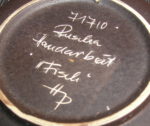
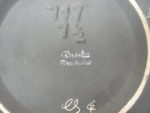
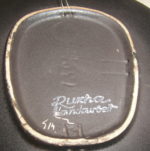
Wall Plaques
1960s and 1970s Ruscha wall plaques were not marked with moulded details but often had stamps saying either “Hardgemalt” or “Ruscha Handgemalt” and sometimes the form number and size.

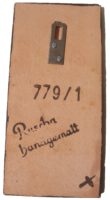
Another indication of a Ruscha wall plaque (particularly from the 1960s and 1970s) is the use of a distinctive metal bracket supported by two screws for hanging the plaque. I have only ever seen this design of metal bracket on Ruscha items.

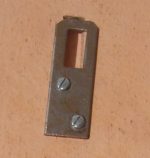
Ruscha also used a rustic metal chain to hang some items. Whilst not unique to Ruscha, for example Carstens used similar chains it may suggest an item is by Ruscha.
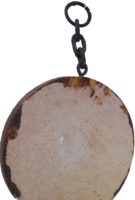
Some of the earlier 1950s style wall plaques have markings more aligned with those used on plates (see above for details of 1950s plate markings) and 1950s wall plaque example below.



